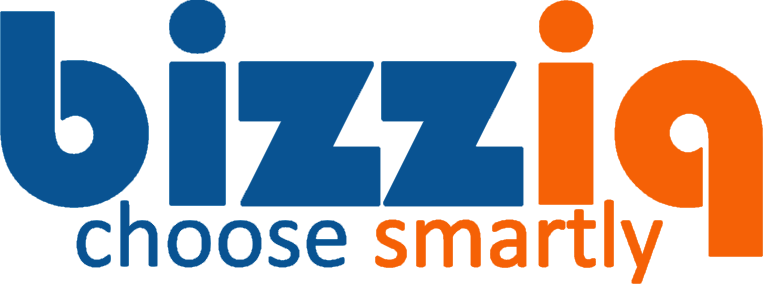Intro to Change Management Models
Change is an inevitable part of any organization, whether it involves adopting new technologies, restructuring teams, or shifting strategic directions. To successfully navigate these changes, businesses employ change management models. These models provide structured approaches to facilitate the transition, ensuring that changes are implemented smoothly and effectively. This article explores the fundamentals of change management models and outlines key frameworks that organizations can utilize for successful change implementation.
Understanding the Fundamentals of Change Management Models
Change management models are systematic approaches that guide organizations through the process of change. These models are designed to help manage the human side of change, addressing both the psychological and practical aspects that influence how individuals and teams respond to new initiatives.
Why Change Management Models Matter
-
Structured Approach: Change management models provide a clear framework that helps organizations plan, execute, and monitor change initiatives. This structured approach minimizes confusion and resistance among employees.
-
Enhanced Communication: Effective models facilitate open communication, ensuring that all stakeholders are informed about the reasons for change, the processes involved, and their roles in the transition.
-
Reduced Resistance: By anticipating potential challenges and addressing concerns upfront, change management models can help reduce employee resistance, which is often a significant barrier to successful change.
-
Increased Success Rates: Organizations that leverage well-established change management models tend to experience higher success rates in their change initiatives. Studies suggest that structured change processes can lead to a 70% success rate in transformations compared to unstructured approaches.
Key Components of Change Management Models
- Assessment: Understanding the current state of the organization and identifying areas that require change.
- Planning: Developing a detailed plan that outlines the change objectives, key stakeholders, resources needed, and timelines.
- Implementation: Executing the plan while providing support and resources to employees to navigate the transition.
- Monitoring and Evaluation: Continuously assessing the impact of the changes and making necessary adjustments based on feedback and outcomes.
Key Models and Frameworks for Effective Change Implementation
Several models have been developed over the years to guide organizations through change. Below are some of the most widely recognized and effective change management frameworks.
1. Kotter’s 8-Step Change Model
Developed by Dr. John Kotter, this model outlines eight essential steps for successfully implementing change:
- Create a Sense of Urgency: Highlight the need for change to motivate stakeholders.
- Form a Powerful Coalition: Assemble a team of influential leaders to guide the change effort.
- Create a Vision for Change: Develop a clear vision that articulates the desired outcome of the change.
- Communicate the Vision: Share the vision widely to ensure understanding and buy-in from all employees.
- Empower Action: Remove obstacles and encourage risk-taking to enable employees to embrace the change.
- Create Quick Wins: Identify and celebrate short-term achievements to build momentum.
- Build on the Change: Use early successes to promote further change and reinforce the vision.
- Anchor the Changes in Corporate Culture: Ensure that the new practices are integrated into the organization’s culture and processes.
Example: A company undergoing a digital transformation may use Kotter’s model to communicate the urgency of adopting new technologies, form a coalition of tech-savvy leaders, and celebrate milestones in the implementation process.
2. Lewin’s Change Management Model
Kurt Lewin’s model is one of the earliest frameworks and consists of three key stages:
- Unfreeze: Prepare the organization for change by breaking down the existing status quo and addressing any resistance.
- Change: Implement the new processes, practices, or structures while providing support and resources to employees.
- Refreeze: Consolidate the new changes by establishing them as the new norms within the organization.
Example: In a manufacturing company looking to adopt lean practices, management first educates employees about the benefits of lean, implements new procedures, and then reinforces these changes through training and policy updates.
3. ADKAR Model
The ADKAR Model, developed by Prosci, focuses on the individual’s journey through change and consists of five building blocks:
- Awareness: Understanding the need for change.
- Desire: Developing the willingness to support and engage in the change.
- Knowledge: Gaining the necessary information and skills to implement the change.
- Ability: Applying the knowledge to achieve the change.
- Reinforcement: Sustaining the change by reinforcing the new behaviors and practices.
Example: In a healthcare organization adopting a new patient management system, staff would first be made aware of the system’s benefits, encouraged to embrace the change, trained on how to use the system, and provided ongoing support to ensure successful adoption.
4. McKinsey 7-S Framework
The McKinsey 7-S Framework emphasizes the interconnectedness of seven elements within an organization:
- Strategy: The plan for how the organization will achieve its goals.
- Structure: The organization’s hierarchy and reporting relationships.
- Systems: The daily activities and procedures that staff engage in.
- Shared Values: The core beliefs and culture of the organization.
- Style: The leadership approach of management.
- Staff: The employees and their skills.
- Skills: The capabilities and competencies of the organization.
Example: When a bank decides to shift toward digital services, it must consider how its strategy, structure, systems, and culture align with this goal to ensure a holistic approach to change.
Conclusion
Change management models are essential tools for organizations seeking to implement change effectively. By understanding the fundamentals of these models and applying well-recognized frameworks, businesses can enhance their ability to navigate transitions, minimize resistance, and ultimately achieve their desired outcomes. Whether through Kotter’s structured steps, Lewin’s simple yet powerful stages, the individual-focused ADKAR model, or the holistic approach of the McKinsey 7-S Framework, organizations can find a path that suits their unique needs and culture. Embracing these models can lead to more successful change initiatives and a resilient organizational culture ready to adapt to future challenges.



